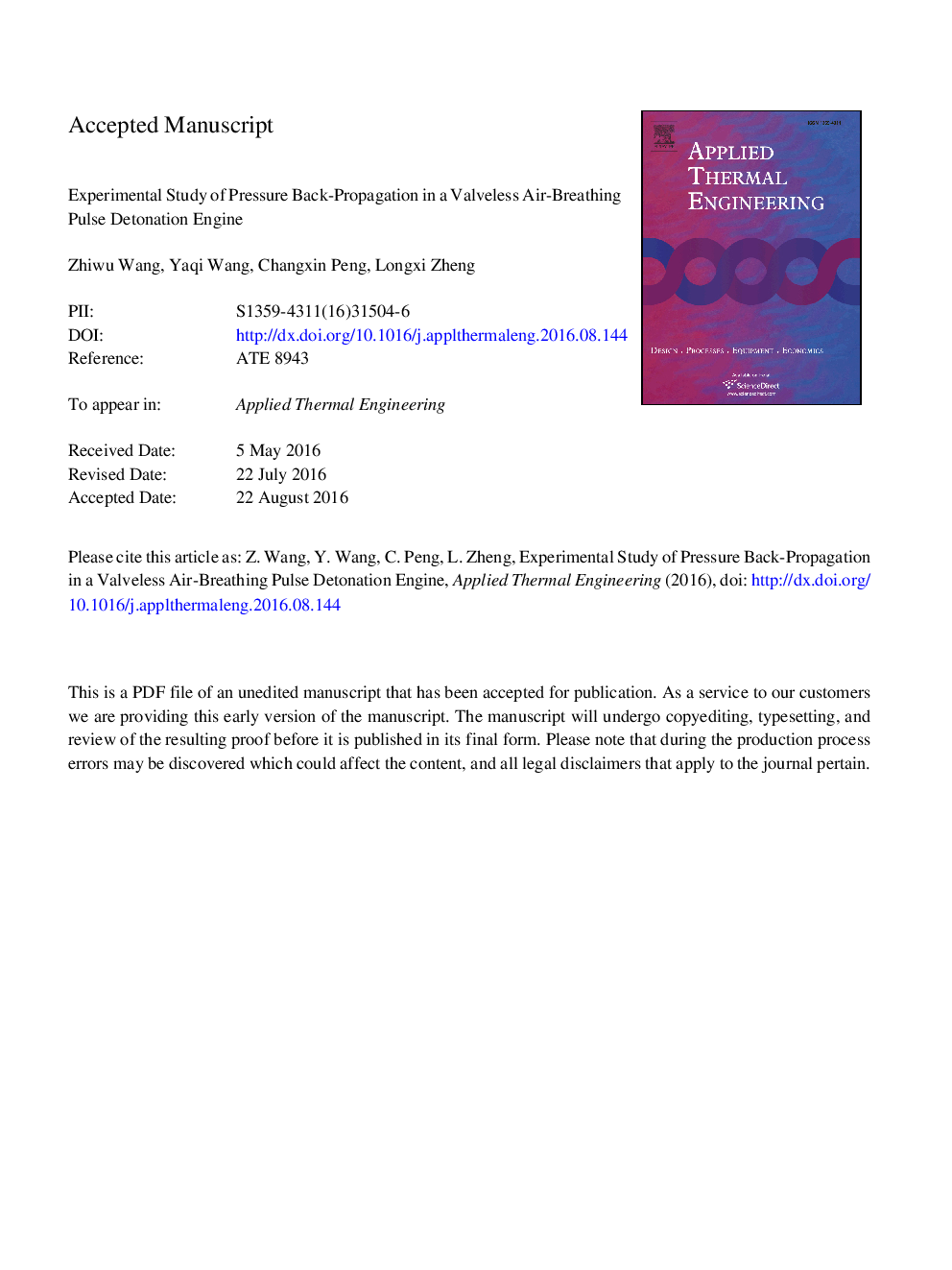| Article ID | Journal | Published Year | Pages | File Type |
|---|---|---|---|---|
| 4991993 | Applied Thermal Engineering | 2017 | 28 Pages |
Abstract
Experimental studies were performed to improve the understanding of pressure back-propagation in a valveless air-breathing pulse detonation engine (APDE). Liquid gasoline was used as the fuel and air as the oxidizer in the two-phase APDE. The evolution of pressure field along the length of APDE was analyzed, and it was found that the pressure plateau was first maintained by the thrust wall and then widened by the arrival of the retonation wave when the pressure declined to a certain value. The disturbance in the air inlet was primarily caused by the backward deflagration wave induced by the spark ignition. The retonation wave had little influence on the upstream air in the inlet, but the geometry of the air inlet could lead to wave interaction, which reinforced the pressure at the present operating conditions. The effects of ignition energy and fill-fraction on the pressure of backflow were investigated as well. The results indicated that the peak pressure in the air inlet increased at the increased ignition energy and this trend was more obvious at the lower operating frequencies. The intensity of the disturbance in the air inlet was nonlinear but fluctuated with the fill-fraction. This was caused by the different filling conditions and the complicated flow field in the engine.
Related Topics
Physical Sciences and Engineering
Chemical Engineering
Fluid Flow and Transfer Processes
Authors
Zhiwu Wang, Yaqi Wang, Changxin Peng, Longxi Zheng,
